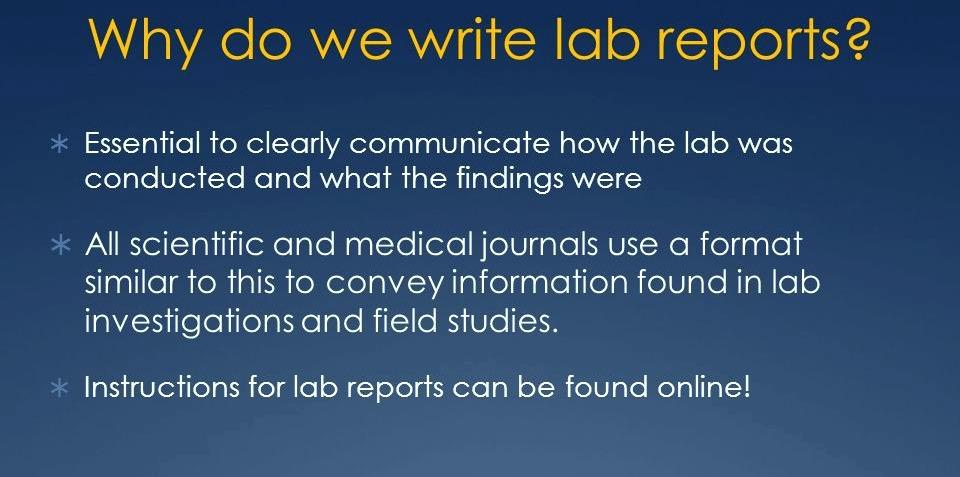
Principles of Writing a Scientific Lab Report
The process of writing a scientific lab report essentially differs from other academic writing that you do from time to time for your classes. First of all, scientific research papers are mainly written for science disciplines such as physics, biology, chemistry, astronomy, etc., whereas other academic papers are written for more humanitarian disciplines such as history, literature, psychology, and so on.
Upon getting the assignment, students need to make sure they properly understand how to write a science lab report as it has its specific scientific report format. Moreover, a student should be aware which scientific experiment should be conducted for the scientific paper as it is prudent to be well aware how much time you will need for carrying out the experiment and producing the results. Further, a student should know how to write a scientific hypothesis as it will shed light on the core argument/claim made in the paper.
Science Lab Report: Basic Format
In the science lab report title, make sure to indicate the main aspect of the paper. In other words, the title should reflect on what you did (the main point of the investigation or scientific experiment). Make sure to make it brief (ten words maximum).
Science lab report template: Caffeine Stimulates Amylase Activity in the Mealworm
From credible scientific reports, you can learn how to formulate titles properly. If possible, avoid starting the title with articles “a,” “an,” or “the” but rather start formulating the title with the main keyword.
After you have written the title, provide an abstract, which succinctly summarizes the science lab background as well as the core purpose of the report. Provide a summation of the presented data in 150-200 words. Abstracts are essential for the science paper format as they provide an overview of the paper, so before you even get to read it, you know the general idea of what it is about. Abstracts are a fundamental part of the lab report as they are required for conference submissions as well as for presentations. They indicate the purpose of the report, background information on it, introduction, purpose and hypothesis, and brief mention of the results.
Introductory section
Here you need to define the core idea of the lab report, its subject, background information on the research, aims and objectives, as well as relevant studies. The introduction also presents information about the required research and sources relevant to the topic. Moreover, it is necessary to include a concise summary of primary and secondary sources used for the research.
Methods and materials
It is essential to outline the scientific method utilized for the research or experiment. You need to provide a detailed account of methodology and research materials used. Besides, in this section, you need to describe the whole experiment in utmost detail, such as the nature of the experiment, its location, participants, tools, apparatus, substances, and so on. The science method projects should be discussed and interpreted in detail so that any other researcher can replicate the data in the exact way. Make sure to provide subheadings in order to distinguish sections of a scientific paper.
Results section
Here you have to focus on the discussion of experimental findings, procedure science, and tests used during the experiment. Moreover, it is important to focus on general differences and trends rather than some trivial details. Besides, it is essential to remember that the experimental data should be merely summarized without discussing the implications. The data representation should be organized into graphs, figures, tables, and images. When providing different visual support, it is crucial to remember that the data is not repeated. For example, if you have included some part of data in the graph, it is totally irrelevant to duplicate it in tables.
Discussion section
Here you need to interpret and explain the results instead of merely summarizing them. Besides, you need to pinpoint to the connection between the results and the information you have included in the background section. Include any observations you have made and highlight the way they have affected the results. Make sure the interpretation of data is logical and clear. Relate the obtained results and findings to the existing theoretical knowledge. Also reflect on the validity of hypothesis. Make sure you suggest options how the design or technique could be improved.
Acknowledgements and references
A reference list and a bibliography are provided at the very end of the paper. You need to provide a list of sources that you have used while completing the report in the alphabetical order. Acknowledgements section is an additional section that is used in the paper and which includes gratitude and highlights the importance of partners, advisors or other people who made a contribution to the research.
General Tips on Writing Scientific Laboratory Report
It is totally acceptable to use passive voice for a scientific laboratory report. On the contrary, using first-person pronouns is not encouraged. You may skim read a scientific report journal to get familiar with proper formats for lab report writing.
It is required that students write the lab report in formal scientific style also using much terminology relating to the topic. Expressing one’s opinions is not acceptable at all. The same is about different techniques of making a paper vibrant and appealing. Everything should be clear, concise, and up to the point.